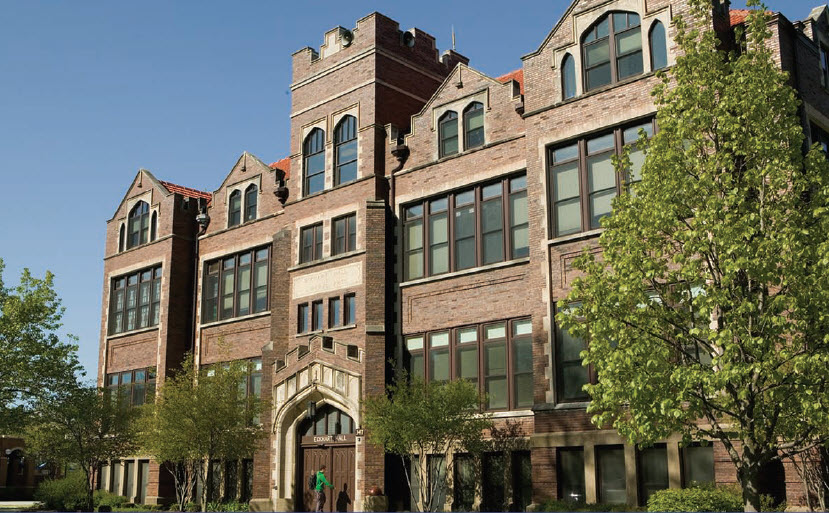enrollment
Campus case study: Aurora University

For several years, Aurora University in Illinois had been trying to increase its first-year enrollment without reducing its net revenue. “We always had a goal of 200 freshmen,” says Director of Freshman Admission James Lancaster, an Aurora alumnus who assumed that role in 1999. “But our average freshman class from 1990 to 1999 was 148.”
When President Rebecca Sherrick arrived in 1999, Lancaster relates, she asked Noel-Levitz to evaluate the college’s enrollment efforts and provide strategic advice. That year, the admission office began employing the Noel-Levitz Enrollment & Revenue Management System™, which uses an institution’s historical enrollment, tuition, and award data to create an econometric model that guides financial aid awarding to maximize enrollment returns. “This allowed us to take a hard look at price elasticity to make decisions on tuition hikes and merit awards to help us shape and build our class,” Lancaster says. “We hit 204 that year.”
Focusing on students who are likeliest to enroll
The next year, Lancaster’s office began using ForecastPlus™, an advanced predictive modeling tool that uses past enrollment data to score an institution’s prospective students in terms of likelihood to enroll. “We averaged 10,000 inquiries a year, and we had always treated everyone the same,” he explains. “When we learned we could score them, we could really focus our efforts.”
Aurora began mailing its most expensive search piece only to students who score in the top 40 percent in the inquiry pool—a huge cost saving. Others receive a tear-off card or an e-mail, but are subsequently dropped from the pool if they don’t make further contact with the college. “There is a model override for anyone who visits campus,” Lancaster notes.
Perhaps most significant, each admissions counselor uses the information provided by the model to focus on developing personal contacts with the 100 highest-scoring students in his or her territory. In addition, each counselor has an intern who works with the second 100 in that territory, ensuring that the students likeliest to enroll are receiving the most attention, while telemarketing efforts are focused on the remainder of those in the top 40 percent of the pool. At the urging of Noel-Levitz, the admission office also hired a dedicated communication specialist—someone who is not traveling a territory—to oversee use of the predictive modeling information and support all of the offices’ efforts, from e-mail and telecommunications to campus tours and visit days.
“The consulting that came with the predictive modeling was really important,” Lancaster says. “Noel-Levitz asks more questions than they answer, and they have you put everything you do under the microscope and find ways to improve efficiencies. They also convinced us how important the data collection is. The better your data, the more you can trust the model,” emphasizes Lancaster, who considers the college’s behind-the-scenes enrollment data manager as important as his front-line recruitment staff.
Getting the right students
As Aurora began focusing its enrollment marketing efforts, says Lancaster, “we really took off.” The college enrolled 289 freshmen his second year and 331 the following year, with growth continuing through the decade. From 2000 to 2009, Aurora’s freshman class averaged 320; this fall it reached 503, increasing net revenue by 25 percent over 2009. “Our average GPA and ACT scores have continued to rise throughout, and our net revenue has consistently risen,” Lancaster reports. “And we’re getting good fits, because our retention rates have coincided with our enrollment rates.”
He credits President Sherrick with an insistence that as Aurora’s enrollment grew, the college made sure that student expectations were being met—even as the college dealt with first-time challenges like crowded residence halls and parking lots. “It was really about increasing communication on campus, breaking down the silos, encouraging more cooperation between faculty and other departments, making sure everyone knows about our academic programs, our honors programs, our student life, and other offerings.”
As the freshman class has swelled in size, Lancaster says, the on-campus population has nearly doubled. “That makes a big difference at campus events,” he states. “We have a much more vibrant student body, and our growth has really helped raise the profile and reputation of the institution.” With the college’s average ACT score at its highest level ever, Lancaster’s next goals are to continue shaping the class, using high model scores to target male students and students in certain majors or geographic areas.